GENERAL BREWERIANA
GALLERY 2
please allow the pictures to be loaded before scrolling the page
MUGS & GLASSES

English victorian pint;
note the marks on the rim |
Mugs have always been the traditional drinking vessel for beer. In old times
their shape was rather standard, altough it changed from country to country; they were usually
made of stoneware or pewter. They did not have any special brewery label, which
became a common feature only in more recent times, but they had different kinds of decoration.
Now glass is used for ordinary mugs, which sometimes have peculiar shapes; a number of collectable
items, instead, are still made in stoneware, according to the classical design.
|

curious shape for
a modern Dutch mug |

painted mug,
typically from
Bavaria and Tirol
|

old-style mug from
the French brewery
Kronenbourg |

stylish mug from a set
of 3, by the Italian
brewery Poretti |
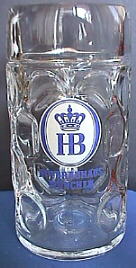
1-liter mug used
by the Hofbrauhaus
brewery in Munich |

East German mug |

Dutch mug by Amstel |
set of 6 glasses
by Heineken, with
replicas of old labels
(white paper has been
inserted to show the labels) |
 |
Glasses have been commonly used for
beer only in more recent times (20th century).
Beer glasses may have a considerable number of
shapes, some of which are known with special
names in each country; most of them are designed
for specific qualities of beer: the tallWeizen
glass for German 'white beer', the cylindrical
Stange Kölsch for lagers from Cologne,
the wide chalice glass for fruity beers from
Belgium, etc.
|
  
typical bar tumblers:
English (right), Dutch (center) and East German (left) |
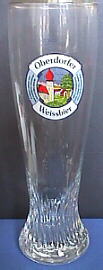
German
Weizen glass
|

curious specimen
from the U.S.A. |

Polish glass
(early '80s) |
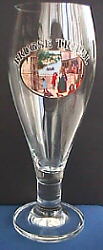  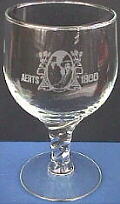
several glasses from Belgium |
DROP-CATCHERS

specimen from
Belgium |
Normally used in Germany where they are called Pilsdeckchen,
and less common in surrounding countries (Belgium, the Netherlands), these small
round paper tissues are placed around the shaft of 'tulip' glasses, chalices, etc. to prevent beer
or moist droplets from dribbling down on the table.
They are usually white, with the brewery's labels all around, and a cut on one side
for inserting them into place.
|
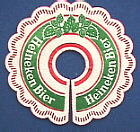
specimen from
the Netherlands |
TRAYS

Italian tray (plastic) |
These small beer trays are used in bars for serving glasses and bottles at
the tables.
Metal is the standard material they are made of, although a few plastic ones exist,
less colourful than the previous.
Their shape is usually round, with high rims so to prevent objects from falling, but some
of them are square or rectangular.
Since they are not so easy to obtain there are not many collectors, who often hang them
for display: they make an excellent wall decoration.
|

British tray |
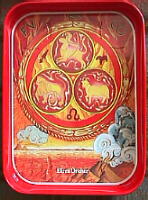 |
two Italian specimens;
each of them belongs
to a different set,
with four subjects |
 |
BAR BILLS

Spanish bill
with a German beer
|
Tipically used in the Netherlands, where bars often present a bill on small
notebook sheets carrying a brewery name at the top.
They are a rather uncommon form of collection, due to the fact that these notebooks are very seldom
used by bars in the rest of the world.
bills from the Netherlands
|

a bill sheet
from Belgium
|
PINS

a single can of Bud...
...and a six-pack |
Pins are modern collectables, very popular among young people maybe because,
unlike many other breweriana items, they can be actually used (i.e. worn on jackets, etc.) without
any risk of spoiling them.
There is no limit to the variety of shapes and colours they may have: some show a brewery's label,
some others have beer glasses or beer cans, etc.; they are usually made of metal or plastic,
decorated with enamel colours, either with a glossy surface finish or with details in relief.
|
 
|
HEADED PAPER AND "WITH COMPLIMENTS" NOTES

headed paper by German,
Swiss and Danish breweries

"With Compliments" from Whitbread, England |
When contacting breweries by mail, it is very likely
to receive a reply with the company's headed paper and envelope.
Since they carry the brewery's logo and address, some people keep them (as well as "With Compliments"
notes, often enclosed).

a German note
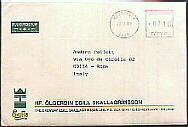
envelope from Egils (Iceland)
|
back to the Beer Index
Beer Index